Issue 20a / 31 May 2024
In part one of this week's serving of DIY electronic goodness... Album Of The Week: Annie Hogan's 'Depths Of Disturbances' + interview
Friday again? Is it just me or does it come round quickly? When I was on a monthly mag schedule it seemed you were living about six weeks in the future, so you’d often think it was July when it was still May. Tricky. Weekly schedules are much more day-by-day. You can react much faster, drop an advert in at the last minute or write a story between the first issue and the second issue, which I did last week. I really enjoyed being able to do that. Like I’ve said before, there is something special about a weekly schedule, not least you’re moving so fast your feet often don’t touch the ground.
This is the 20th issue of Moonbuilding Weekly, which has also come round really quickly. I’ve learnt a few lessons along the way, which I might share at some point. Some of it has surprised me, some not so much. Anyway, it is Friday again and you’re about to get your weekly double whammy. Part Two will be along at 3.30pm. I’ve not missed a deadline yet, which could be famous last words if you could see my schedule between now and then. Wish me luck!
Neil Mason, editor
moonbuildingmag@gmail.com
Issue 20 Playlist: See this afternoon’s mailout
The Moonbuilding tip jar: ko-fi.com/moonbuilding
***ADVERTISE HERE***
Email moonbuildingmag@gmail.com
ANNIE HOGAN ‘Depths Of Disturbances’ (Downwards)
There’s a profile of Annie Hogan on Discogs. It says: “Composer, producer, musician, performer, collaborative artist and DJ. Best known for being a steady sidekick to Marc Almond during the 80s, Annie plays piano and keyboards mainly.”
It’s fair to say this is quite an underselling of her talents. Annie Hogan is an artist who is weaved through pop history, or leftfield pop at least. She originally went to Leeds to go to university, but ended up DJing and promoting live nights at Amnesia, putting on early shows from the likes of Depeche Mode, The Human League, ACR and Soft Cell, who ended up as her flatmates.
She met Matt Johnson in the early 80s who introduced her to Simon Fisher Turner, which led to her first recording session. It wasn’t a bad debut what with it being the first Deux Filles album. She was chief mamba in Marc And The Mambas, working extensively as Marc Almond’s musical director over the years. She’s a serial collaborator working with the likes of Yello, Barry Adamson, Jim Thirwell, Zeke Manyika, Hugh Masekela and The Style Council, which was no fun apparently. Then there’s her own band, Cactus Rain, oh, and the seminal 1985 'Annie Hogan plays Kickabye' EP, released on Cabaret Voltaire’s Doublevision label and featuring guests such as Nick Cave and Budgie.
While the 80s were clearly a high-water mark, Annie Hogan hasn’t ever stopped creating. Check out her 2012 ‘Mountain’ OST with Rob Strachan, ‘Scanni’, the 2016 electroacoustic collaboration with Scanner, the album she made as Zanti with Simple Minds’ Derek Forbes, and the murder ballads collection ‘Lost In Blue’, which casts back to ‘Kickabye’ with guests like Gavin Friday, Lydia Lunch, Richard Strange and Wolfgang Flur. All quality gear.
The really great thing about Annie is the longer she’s gone on recording the more experimental she gets. Since 2020 she has been releasing on Regis’ long-standing Downwards label, which very much suits her. The Regis collaborative albums – ‘Reversing Into Tomorrow’ and the ‘Hospital For Beasts’ soundtrack - are both excellent, while Annie’s piano/atmospherics albums ‘Honeysuckle Burials’ and ‘Funeral Cargo’ are a real treat. Have a poke around on her Bandcamp when you’ve a spare afternoon. You won’t regret it.
Which brings us to ‘Depths Of Disturbances’, a recording that finds Annie Hogan moving things up a notch. While ‘Honeysuckle Burials’ and ‘Funeral Cargo’ both featured subtle field recordings, here the whole thing is recorded in the field. Or to be more precise, Bidston Observatory on The Wirral peninsular. If you think that sounds familiar, you’d be right. Ex-Easter Island Head, a very recent Moonbuilding Album Of The Week, recorded there too.
No longer an observatory, these days it’s a not-for-profit artistic research centre that provides low-cost temporary workspaces for a wide diversity of fields, from art, music and theatre, to philosophy, culture and technology. Perched on top of Bidston Hill, it has two large, white domes on the roof which used to house telescopes as well as a weather cabin that held the instruments for recording the conditions. And it’s in these spaces Annie recorded ‘Depths Of Disturbances’ last autumn and winter.
She lugged a load of instruments up to the roof, including a melodica, flute, clarinet, organs, marimba, something called an Antonelli air organ as well as various keyboards, synths, amps, oh and a mandolin – and she let them, the building and the weather work their magic.
‘Depths Of Disturbances’ is one long piece, clocking in at 36 and half minutes. It is a section gleaned from the many recordings captured during her sojourns to the observatory and tweaked and embellished into this finely honed finished article.
You can hear the spaces she’s working in clanking, echoing, resonating and vibrating around her. The whole thing shimmers with the kind of menace only weather can muster. There’s passages of calm followed by extreme drama, a crash that’s over in seconds, a musical rhythm that follows the sounds permeating from outside, clanks and shimmers, deep rumbles, sometimes it’s hard to know what’s created by the instruments and what’s beaming in from the outside or coming from the structures themselves. For the climax, things get really squally and an echo-y vocal appears, almost swamped in the developing wall of noise, a constant rumble of menace where squally high-pitched tones mingle until the clouds clear.
During the sessions, Annie also spent time in two nearby lighthouses – Bidston, the furthest inshore lighthouse in the country and right next door to the observatory, and the nearby Leasowe Lighthouse – and she is currently preparing those recordings for release. Can’t wait. The only thing that’s missing here is perhaps footage of her working. To be able see these incredible spaces as well as hear them would be a delight. Or maybe that’s the thing. You have to imagine for yourself, decipher the sounds, close your eyes and put yourself in the hands of Annie Hogan. She talks with such glee about the experience of being in these spaces. Please do read our interview before you listen to the results. Your experience of this release will be richer for it.
Sure, Annie could knock out albums of her gorgeous piano playing until the end of time, but this kind of invention, creativity and curiosity is clearly also lighting her fire. ‘Depths Of Disturbances’ is such a well thought out, intriguing and brilliantly executed piece of work. “Annie plays piano and keyboards mainly”. Yeah, right.
‘Depths Of Disturbances’ is released by Downwards via Boomkat very soon. Find Annie Hogan on Bandcamp at annihogan.bandcamp.com
ANNIE HOGAN
Enjoy a wonderfully lengthy chat about everything from how you spell her name these days and her favourite collaborators over the years to how to keep warm when recording outdoors in the middle of a Birkenhead winter
Photo: Studio Blue
Interview: Neil Mason
Hello Annie, how’s things? What are you up to today?
“Well, it’s raining and windy as hell so any garden activity is out. However, I recently bought a wildlife night vision camera so I’ve been checking last night’s hilarious ‘film star’ squirrel footage eating hazelnuts while staring intently at the camera. So I’ll be doing that and listening to my new Buddha Machine SE 2024, which is soooo cute. I love the meditative vibes. Somehow I’ve missed these little beauties. I wish I could make one myself.”
I notice the “e” has reappeared in your name. Not Anni anymore? And sometimes you’re Ann Margaret Hogan... so many names! Do you use different ones depending on what sort of music you’re making?
“My name is Ann, which is mostly what friends and family call me. Professionally and for the foreseeable future I am using the consummate ‘Annie Hogan’ as I always should have, but in my less brighter days I kind of lost myself a bit and thought change, including my name spelling, would help me. If anything, it confused fans and hindered my progress somewhat, but I drove down these paths for a reason even if wasn’t clear at the time. When I started working with Regis and his fantastic Downwards imprint, he wanted Annie back from the start. I needed convincing as my confidence was not back fully and I was still aiming low instead of for the stars. I needed a virtual kick up the old bye-bye, which of course he was glad to do. So Annie is back!”
For people who don’t know, you’ve had one heck of career so far. If you could pick a moment that sums you up, what would it be?
“Hmmm… I would have to be with Marc And The Mambas playing ‘Black Heart’ and ‘In My Room’ on Bliss TV live as it flexes all my good points – great playing, my black and white reversed keys Orange Vox Continental, no mistakes, great hair and of course Marc was magnifique. Full on Gotham City!”
You are of course an absolute demon keyboard/piano player – when did you first start playing and why?
“Why thank you kindly. I would say I’m creative and inspirational and make the most of what I have. From when I was seven or eight I went to my cousins’ for lunch every day from school as my mum was working. They had an upright modern piano and as soon as I saw it, it was love at first sight. I played it every day and could play with both hands straight away in some kind of strange magical luck. My obsession led to my parents getting me an upright piano of my own when I was 12 and also weekly piano lessons.”
What is it about the piano that appeals?
“From very young I’d been listening to 45s and LPs and the piano always spoke to me, records by Petula Clark, Walker Brothers, The Beatles, Winifred Atwell, and then once I discovered Nina Simone that was it. My mum’s collection of classical piano works influenced me too. Mum, Margaret, was a self-taught pianist and read music, she played passionately from the heart, a lesson I took into my heart and piano style.
“Of course, the big wow factor of the piano is you basically have an orchestra at your fingertips and I have always made the most of that interpretation in my own playing and compositional writing. I have often incorporated lots of top-line melody and harmonics with a repeating, running bass, which worked for me and my tiny hands.”
You’ve worked with some incredible people over the years, who have you enjoyed working with the most?
“Marc Almond. We had the special magic, the dynamic duo, and through him everything evolved including working with Nico and Gene Pitney, which is mind-blowing really, and I met John Barry and so so much more. The early Mambas with Matt Johnson was special. Billy ‘Beethoven’ McGee and trumpet legend Enrico Tomasso are always brilliant to work with. ‘Kickabye’ was a tremendous time, working with generous, talented artists like Nick Cave and Anita Lane (RIP), JG Thirlwell, Budgie, Gini Ball and of course Marc performing the brilliant ‘Burning Boats’ with Jessamy Calkin’s lyrics on fire.
“I loved working with Barry Adamson as I was, am and forever a massive fan and he is a genius, I learned a lot being around his massive talent, madam. ‘Lost In Blue’ with Dave Ball was fun and I enjoyed us crafting a sort of jazz band synergy and sensibility massively influenced by our combined love for John Barry. I also love working with my American pals, the incredibly talented Jarboe and equally amazing Kid Congo. Recently, working with Regis and Downwards on all sorts of different projects has been totally liberating and Downwards is my way forward, existentially I have been able to access the hidden key to my true self, my new self, whatever the manifest, I clap my hands and believe.”
Anyone you’d like to work with but haven’t yet?
“Barry Adamson again please, TV/film themes, imagined or real… I think me and Blixa Bargeld could do something cool, but presently I’m enjoying losing myself in my own recordings.”
Which brings us very neatly to your new album. ‘Depths Of Disturbances’ is an interesting title…
“The official definition of depths of disturbance is the depth to which wave action can be expected to disturb the underlying bottom sediment. I found this out after I thought I’d invented the title! Over those darker months sometimes I felt at the bottom of the sea, sometimes on the edge of the earth and often flying around in my Dome. Really I was on a hill in Birkenhead, but inspired by the historic venues and all the natural elements imposing their will on my compositional environment.”
You’ve been getting increasingly experimental in recent years, how come?
“I think I’ve always been experimental in my approach, but yes, you're correct, increasingly in recent years it’s surfaced directly from feeling the freedom to express my inner visions and that’s been due to Regis encouraging me to be my true self, however that materialises in my compositional forms. He has total confidence in my artistry and all my previous lost feelings and self doubts disintegrated over our initial meetings and recordings. Only one person, the right person, needs to say yes and an artist can flourish from that initial well of belief.”
You’ve been doing some proper field recording for the new album haven’t you?
“Oh yes, in fact the whole record is only composed from field recordings made in situ in Bidston Observatory, on the roof in the amazing domes and in the original weather station, there’s also some bits in Bidston Lighthouse and on the hill walking, gathering nature’s finest.”
You took various instruments up to the observatory too didn’t you?
“I took in many instruments over those weeks – melodica, dulcimer, flute, clarinet, harmonicas, chord organs, marimba, glock, bells, gong, koto, Antonelli air organ, Yamaha mini keyboards, mini synths mini amps and mandolin.”
Wow! You have a baby grand – that didn’t make it into the great outdoors, did it?
“Ha! She was resting, she hates the cold!”
If I was recording outdoors I’d do it in the summer time. You recorded this last autumn and winter! And in the north-west too!
“It was much quieter then, less people activity, less disturbances to my depths, which was convenient as I wanted as much solitude as possible. It also fitted the vibe I was feeling as I was pulled towards the observatory. It’s a non-profit centre for artistic research and a fantastic place to be in general, generously run with a genuine understanding and respect for artistic natures and fully inclusive in every way. I must say it is super inspiring for my needs.
“I’d been watching ‘Ice Station Zebra’ and Carpenter’s ‘The Thing’ and ‘The Fog’ and ‘The Man Who Fell To Earth’ as I was ruminating over recording in the Domes. They provided very inspirational muses and from there I just expanded on a theme. I had ‘Artistic Research Centre’ as ‘Arctic Research Centre’ in my head and off I went on my sonic expedition to the outer cold reaches of Bidston Hill. But that was only the beginning, my ideas progressed as I responded to the daily elements and recording sites and environments.”
Tell me about working in the domes and weather cabin at Bidston Observatory…
“It’s such a fantastic, inspiring, historic, iconic building. Bidston Observatory, built back in 1866, has magnificent twin domes that originally housed massive telescopes, one for calculating time and one for comet gazing as it was initially run by an astronomer. The domes have a few windows and look like spaceships, they’re vast wooden spaces with mechanisms to spin slowly by means of turning a large hand-operated steering wheel. Amazing! The sensational vistas from every angle from the roof tapped into all my senses, the mystical vibes were palpable that's for sure. Eerie night calls and the star-spangled skies fused all my musical ideas.”
What was so special about recording in these spaces?
“The acoustics in a large, empty wooden dome are epic, euphonious, transmitting on all frequencies and pretty awesome. The weather station was my favourite to record in. There’s still the Dines anemometer in the cabin and the weather vane sits on top and turns to wind direction, which draws an astonishing rolling thunderous roar into the cabin reacting to whatever the atmospheric conditions impose. Most days it was tame and hardly uttering, but overall in those months the storms wailed and my field recorders captured wondrous results on those particular days and nights. I enjoyed the cinematic drama of recording in the cabin. One night in a particularly mental storm I set up amps, recorders and my dulcimer and visualised ‘Ice Station Zebra’. It was extremely inspiring in all its extremities.”
You said you felt like the woman who fell to earth in your dome home, which is a lovely image
“The dome often felt like it was undulating, ready to take off during some of those crazy wintery storms. The impressive structures invoke 20th century cellulose spaceships so it was very easy to visualise myself speeding off to a far distant planet when all the elements kicked in.”
You didn’t stay in the dome did you?
“I didn’t sleep there as I live 15 minutes away, but I certainly recorded late into night and as it got really cold I felt the distance from home was further. In the domes there is no heating so I created a mini fireplace with seven nitelites and had alternating flasks of hot coffee and hot chocolate. I loved every minute and enjoyed improvising out there in the freezing nebula. I am such a Gemini summer sun kind of person, so it was very challenging initially, but ultimately I found it to be a fantastic portal to expressing my artistic experimental and imaginative nature.”
How did you go about working during your time there?
“I set up a minimal studio fresh each day using particular instruments and amps for that day. I worked long days over a couple of the colder darkening months so establishing ease was essential to facilitate my playing, which was basically improvising with the elements on various instruments every day then getting home to my own Studio Blue late at night and transferring all the files over to my main studio system then the whole process started again the next morning.”
The release is presented as one long movement, is it one live session?
“It’s all a bit smoke and mirrors, in the zone over one night mainly. There’s a bit of magic melody infusion with sonic potions thrown together in a mind journey that feels pretty epic as I sew lots of threads together in my Bidston Tapestry. Once I got that weather cabin rolling everything clicked very quickly and then it’s just tweak until satisfied. I had many, many long recordings of elements, improvised performances on various instruments, vocals and atmospheres and nature. A different recipe could be combined every day, but I had to be brutal in my purpose and decide then and there as otherwise, because of my own very nature, I would never decide.”
There’s some beautiful birdsong creeping in at the end. Was that planned or just good fortune?
“I’m always recording nature every day, birds are very special to me, I am always looking to the skies.”
So there’s very much a meteorological/nautical feel to work, was that the intention all along or was it a product of the spaces you recorded?
“Well, the observatory, lighthouses and overlooking the mighty Mersey naturally pulled me towards those feelings.”
It doesn’t end here though does it? There’s more to come from these sessions?
“I’ve just started on the follow-up to ‘Depths’, which is based around my lighthouse recordings also made over autumn/winter 2023 in Bidston and Leasowe Lighthouses, both historic buildings are near me and awe inspiring. I was lucky enough to be granted private access to make some recordings, once in the stunning Leasowe Lighthouse on the north Wirral coast, 149 steps staggered up with a few small instruments and delighted by amazing views, and many times in Bidston Lighthouse, the UK’s most inland lighthouse. It’s nearly 2.5 miles from the shore, less steps, more awe and a special acoustic spot in the top which is a super sonic wow factor.”
Tell me about recording in lighthouses?
“Both are incredible buildings to record in. Leasowe has a beautiful wooden floor and I discovered by experimenting with mic placement the acoustics enlivened at about my waist level, so one foot three inches ha-ha, but you can hear it change and become enhanced. Bidston has a brass plaque on the floor and if you step on it the acoustics are astonishingly palpable, step off and the sonic intensity drops. I loved this very much and stood on and off the spot religiously, singing and playing every instrument into three recorders and sometimes through various settings on mini amps. It’s only ever a privilege to be in these iconic landmarks with their stunning views and incredible histories, and also for me, they are bastions of acoustic wonders.”
I love work like this, but it’s not dinner party listening is it? What do you get from making pieces like this?
“Everything I compose, improvised or otherwise, with or without purpose, gives me immense satisfaction in the doing. After that I don’t really think about it much as I am always on to the next piece.”
That’s us then. Thanks so much for your time Annie, it’s a pleasure as always.
“Thanks, I enjoyed digging deeper for these interesting and probing questions. Have a fabulous summer and all the love and luck for building more beautiful Moonbuildings”
For more about Annie Hogan, visit linktr.ee/AnniHogan
***ADVERTISE WITH US***
Email moonbuildingmag@gmail.com
A MESSAGE FROM THE MOTHERSHIP
SPRING SALE…MUST END SOON…SPRING SALE…MUST END SOON…
MOONBUILDING ISSUE 4, WAS £10 NOW £5 (+P&P). GRAB YOURS WHILE STOCKS LAST … MOONBUILDING.BANDCAMP.COM
The current issue of MOONBUILDING is full to the gills with the good stuff. On the cover, star-in-the-making Maria Uzor, we profile label-of-the-moment quiet details, there’s an incredible interview with Captain Star creator Steven Appleby, and Ghost Box’s Jim Jupp gets busy with our There’s A First Time For Everything questions.
We review a big pile of releases from labels including Castles In Space, Woodford Halse, Persistence Of Sound, Assai, Ahora, DiN, Werra Foxma, Ghost Box and many more. There’s a column from The Orb’s Alex Paterson and the world-famous Captain Star cartoon strip.
This issue’s CD is ‘The Moonbuilding Miscellany – Volume One’, which is put together by CiS supremo Colin Morrison. It’s a belter featuring tracks from the likes of Lo Five, Lone Bison, Twilight Sequence, Ojn, NCHX and more.
Moonbuilding Weekly is a Castles In Space publication.
Copyright © 2024 Moonbuilding

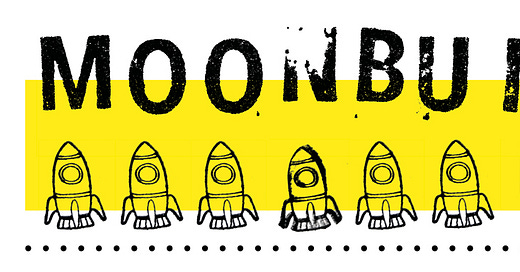




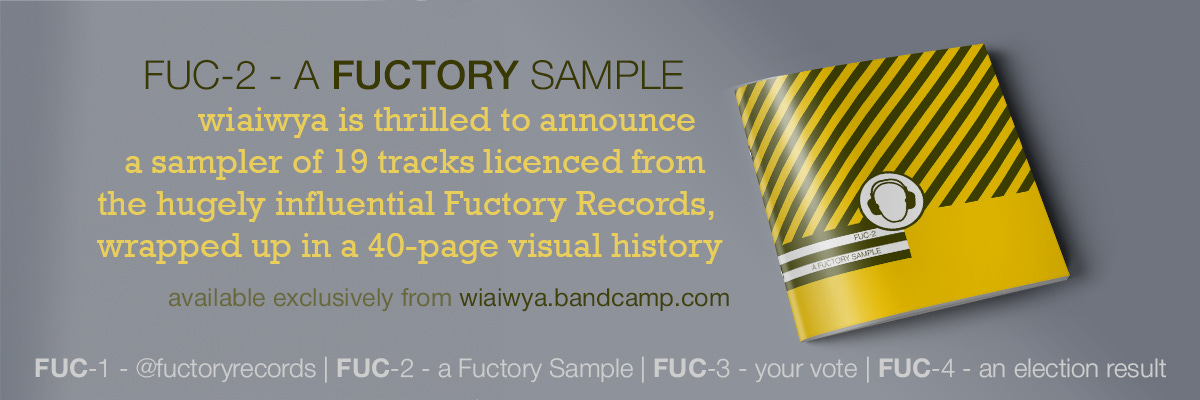

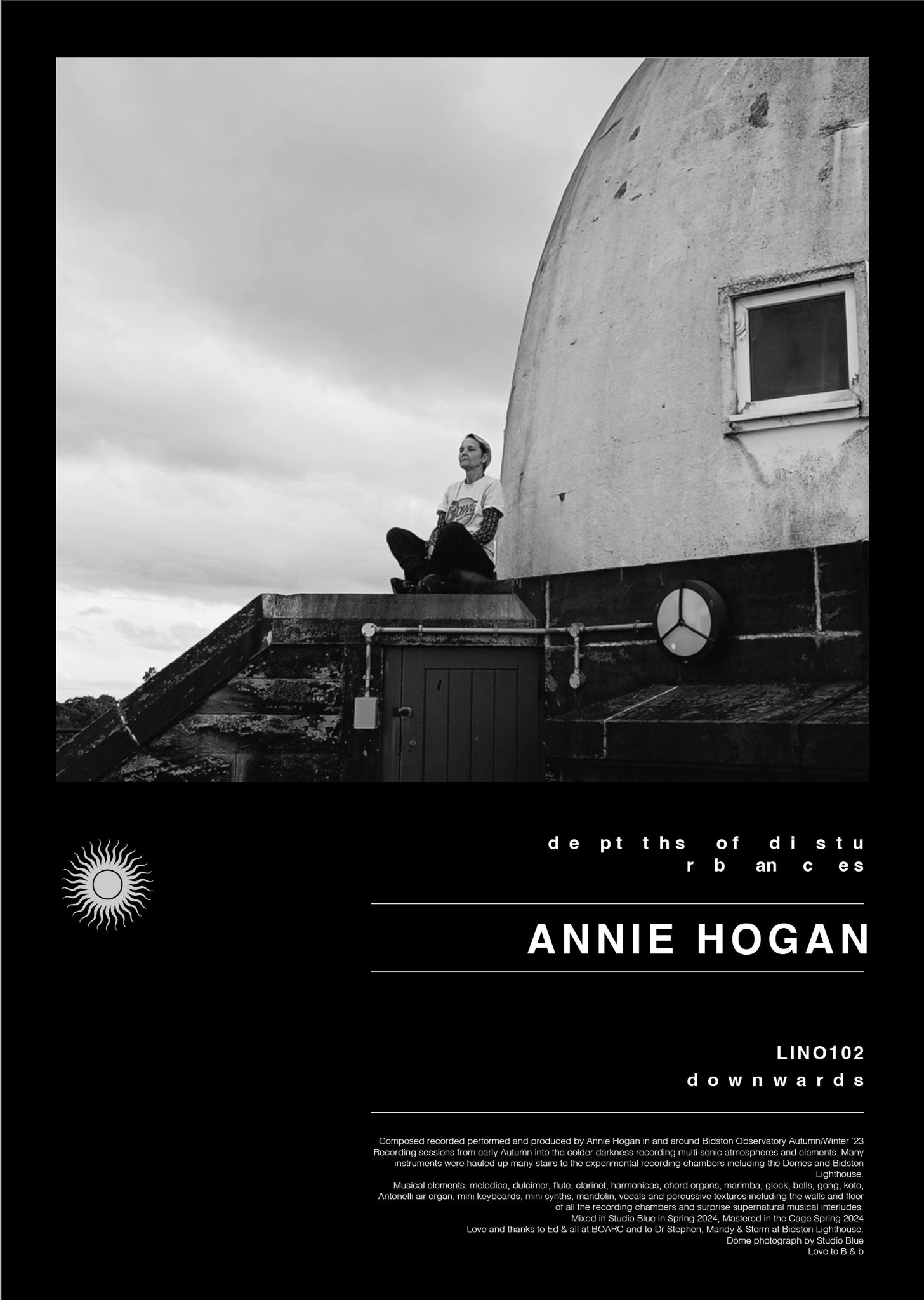
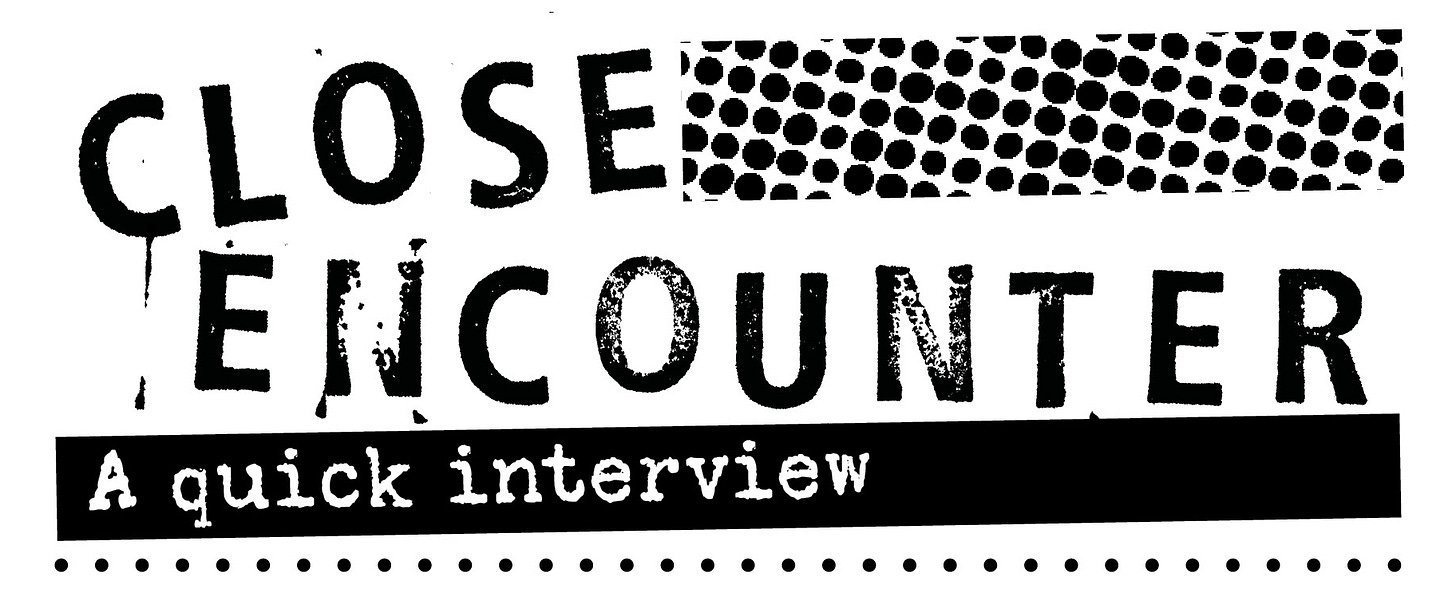
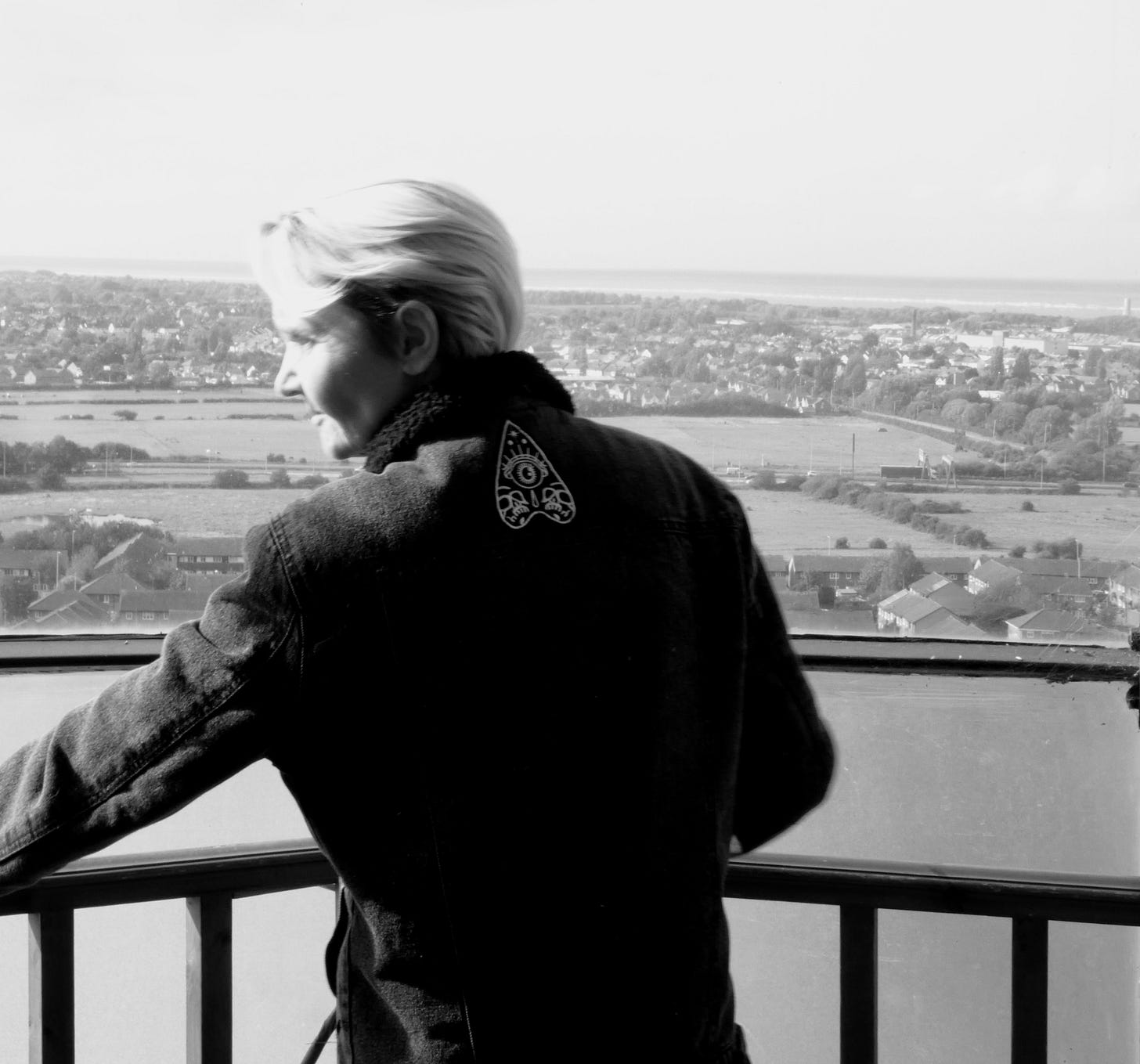
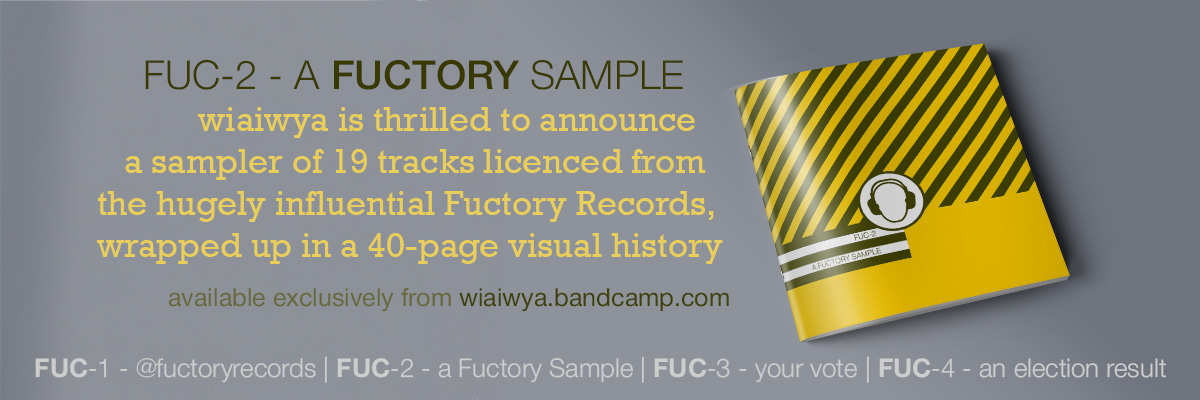
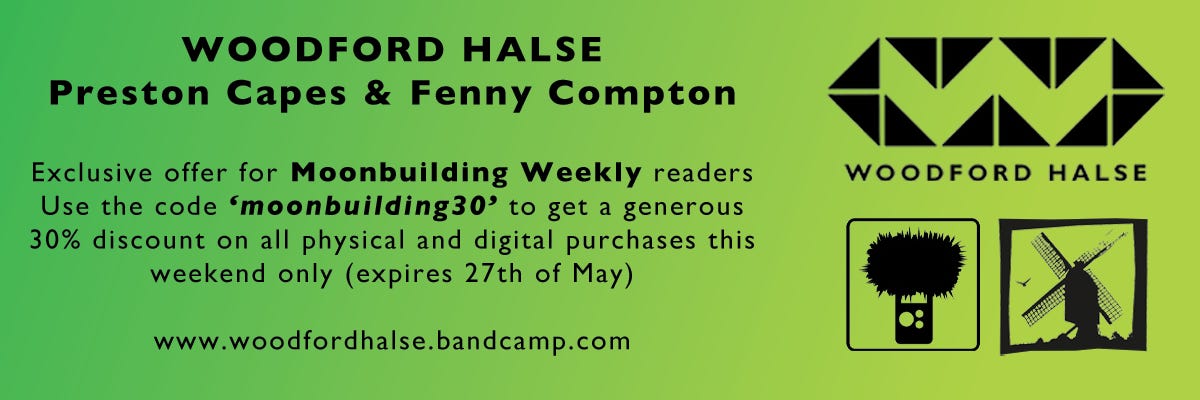
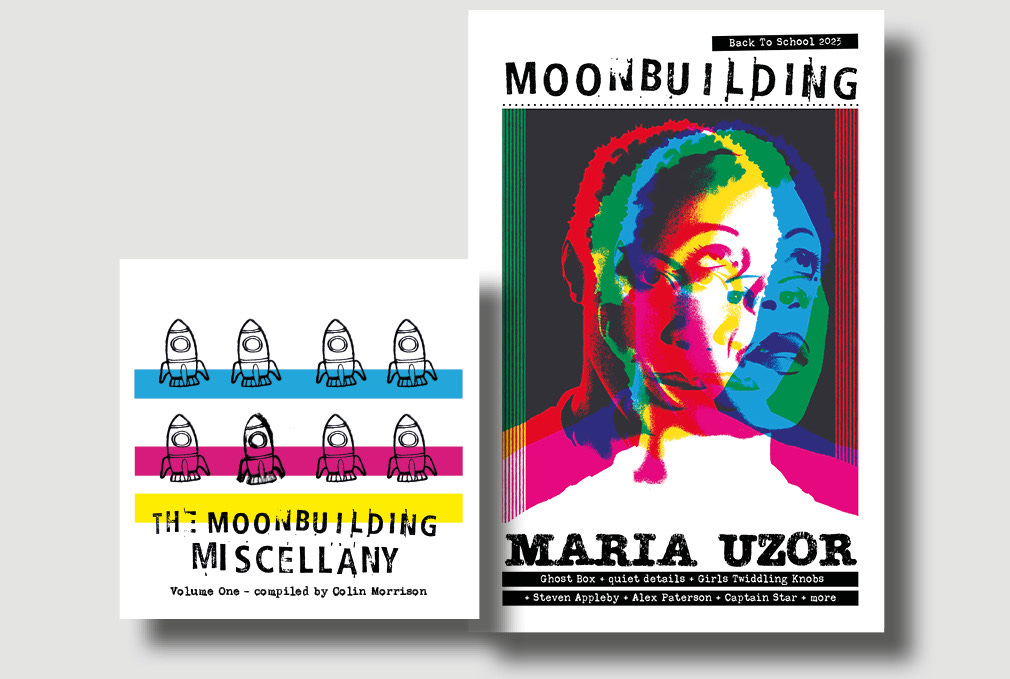
This is ace! You weren't wrong when you said Bidston Hill would get a mention again! The Artistic research centre is an amazing place, they do have occasional open days which I've been lucky enough to attend. Annie this week Ex Easter Island head last week. Wow! I know recently Bill Ryder Jones recorded his last album there and my daughter was lucky enough to sing with the choir on the record. Also Andy Bell happened to stay here on last Octobers Glok tour. Bit special this place.